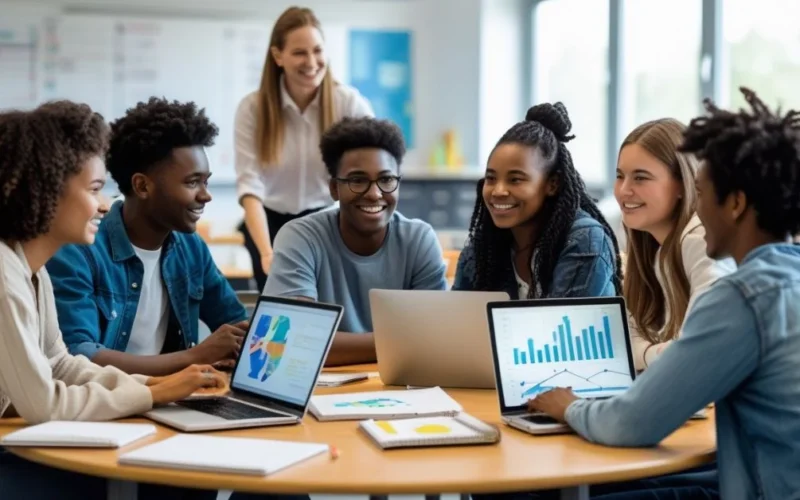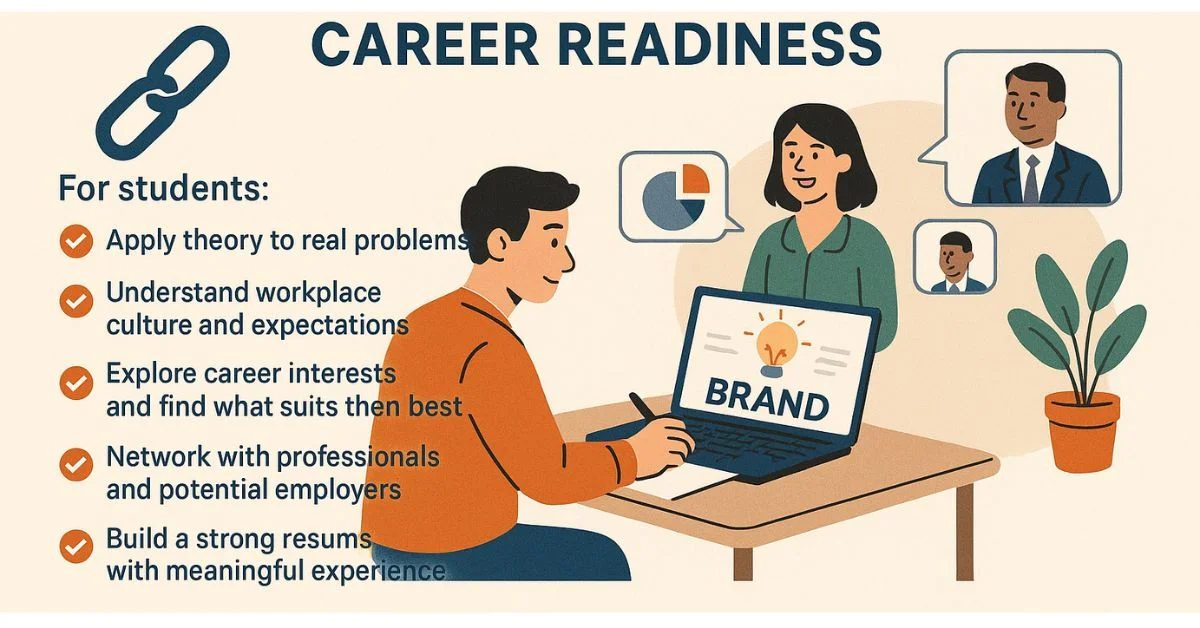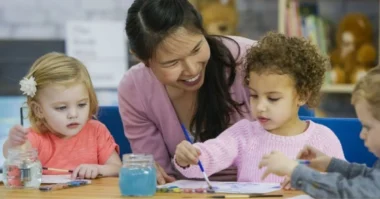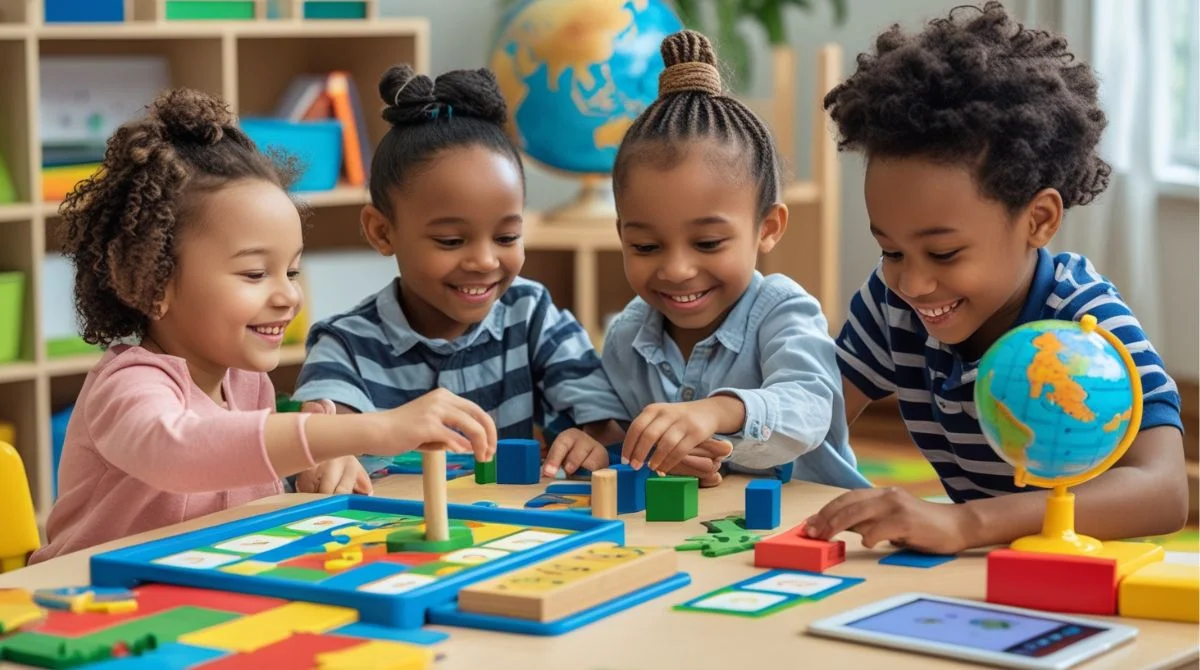Table of Contents
- What Is Collaborative Education?
- Why Collaborative Learning Matters Today?
- Benefits of Collaborative Education for Students
- The Role of Teachers in Collaborative Education
- Tools and Technologies That Support Collaboration
- Real-Life Examples of Collaborative Classrooms
- How Collaborative Learning Prepares Future Workers?
- Overcoming Challenges in Collaborative Education
- Role of Parents and Community in Collaboration
- Comparing Collaborative Learning With Traditional Learning
- Practical Strategies to Apply Collaborative Education
- Global Impact of Collaborative Education
- Conclusion
What Is Collaborative Education?
Collaborative education means students work in teams to solve problems, share ideas, and learn from each other. This method focuses on group learning rather than working alone. It is not just about sitting in a group; it’s about thinking, discussing, and growing together.
Education is changing faster than ever. The old way of learning, where students sit quietly and only listen to the teacher, is no longer enough. In today’s world, we need students who can think deeply, share ideas, and work with others. This is where collaborative education comes in. It is a powerful way to improve learning by helping students learn together.
Key Elements of Collaborative Education
- Team-based learning
- Problem-solving with peers
- Open discussions
- Sharing responsibility
- Respecting different views
This style of learning builds important life skills such as teamwork, communication, and leadership.
Why Collaborative Learning Matters Today?
In today’s digital world, collaboration is more important than ever. People no longer work alone. Offices, companies, and even schools use teamwork to reach better results. Collaborative education teaches students how to succeed in this kind of world. It also helps them:
- Learn faster by asking questions
- Understand different opinions
- Stay more active in class
- Feel less stress and more support
Benefits of Collaborative Education for Students
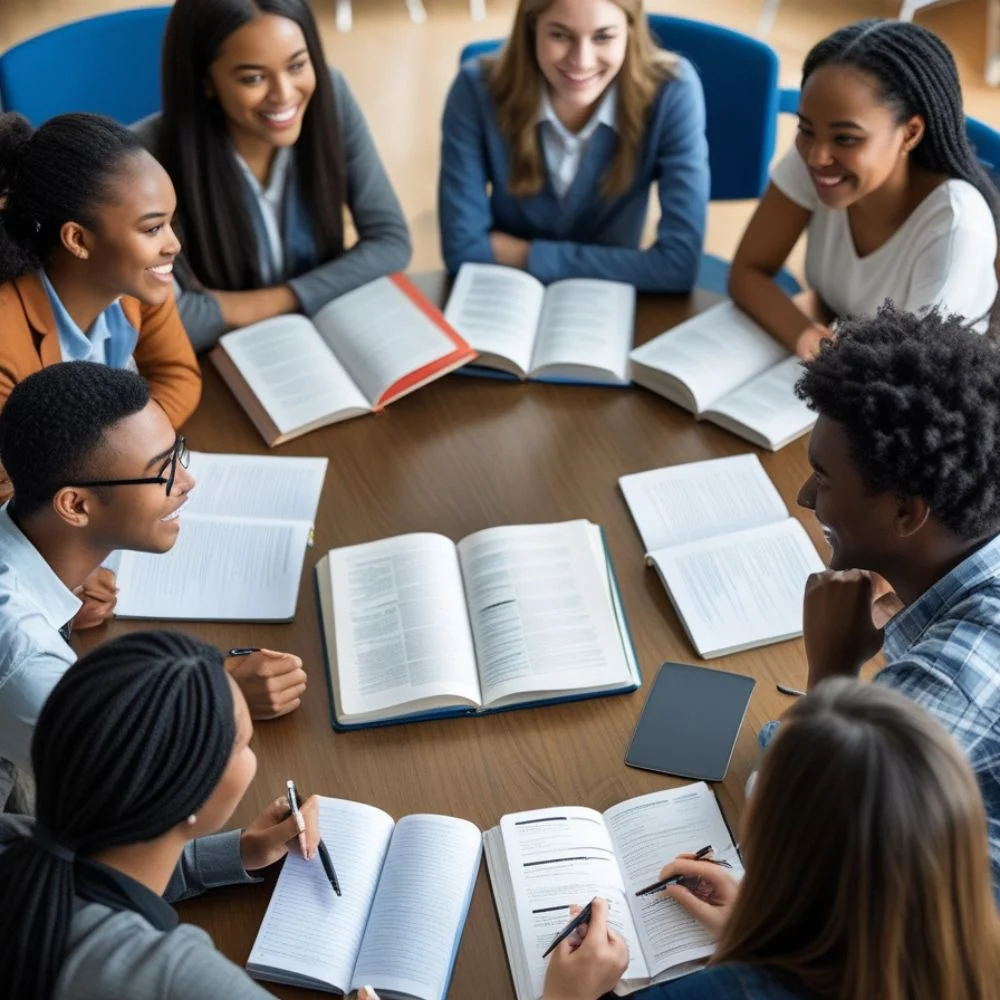
Collaborative learning offers clear, proven benefits for all students. These benefits go beyond academic achievement they also help students grow emotionally by building confidence and socially.
1. Improved Academic Performance
When students teach each other and share ideas, they understand topics more clearly. Studies show that students in collaborative classrooms score higher on tests and projects.
2. Stronger Communication Skills
By talking and listening in groups, students improve their ability to express their thoughts clearly. They also develop stronger listening skills, which are important not only in school but also in real-life situations like family discussions, job interviews, and team projects.
3. Emotional Support and Confidence
In a group setting, students often feel more relaxed and supported. The shared learning environment reduces the fear of making mistakes, allowing them to ask questions freely. This open atmosphere builds their self-confidence, encourages active participation.
The Role of Teachers in Collaborative Education
In collaborative education, the teacher is not the only voice in the room. Rather than simply delivering information, teachers take on the role of guides or facilitators. They support students in thinking critically, staying focused on tasks, encouraging respectful communication, and helping the group learn together through shared efforts.
Ask better questions
- Stay on topic
- Respect everyone’s voice
- Build leadership inside the group
Teachers plan the tasks but give students the space to lead their learning journey.
Tools and Technologies That Support Collaboration
Technology helps make collaborative learning easier and more powerful. Many digital tools support team-based work inside and outside classrooms.
Popular Collaborative Tools
- Google Workspace: Docs, Sheets, and Slides let students edit together.
- Zoom & Microsoft Teams: Great for virtual group meetings.
- Padlet & Jamboard: Fun ways to collect group ideas visually.
- Edmodo & Moodle: Online platforms to manage team tasks and projects.
Real-Life Examples of Collaborative Classrooms
Across the world, schools are using collaborative education to improve learning. Let’s look at a few simple examples.
1. Project-Based Learning in Science
Students form teams to work on science-related projects. Together, they build models, conduct experiments, and solve real-world problems such as pollution, energy use, or climate change. Each team member is given a specific role, encouraging equal participation.
2. Group Story Writing in Language Class
In English or language arts classes, students work together to write short stories. They brainstorm ideas, build characters, and develop plots as a team. Along the way, they review each other’s work, offering helpful feedback on grammar, spelling, and sentence structure. This not only improves writing skills but also boosts creativity and collaboration.
3. Peer Teaching in Math
Once students grasp a new math concept, they are encouraged to explain it to their classmates. Teaching helps them review and strengthen their own understanding. When students explain ideas in simple words, it helps others learn more easily, too. This method creates a supportive learning environment where both the tutor and the learner benefit
How Collaborative Learning Prepares Future Workers?
One of the biggest goals of education is to prepare students for future jobs. Most modern jobs need teamwork. Collaborative education builds workplace skills like:
- Working in teams under pressure
- Thinking clearly in meetings
- Solving complex problems with others
- Respecting diversity in the workplace
These skills are in high demand in fields like business, science, health, and design.
Overcoming Challenges in Collaborative Education
Like any learning method, collaborative education has some challenges. But with the right planning, these problems can be solved.
1. Common Challenges
- Some students don’t participate
- One student may dominate
- Group conflicts may arise
- Time may be short for group tasks
2. How to Solve These Challenges?
- Assign clear roles to each student
- Teach communication rules
- Rotate leaders to share power
- Use simple rubrics for fairness
- Teachers and schools need training and tools to manage these tasks smoothly.
Role of Parents and Community in Collaboration
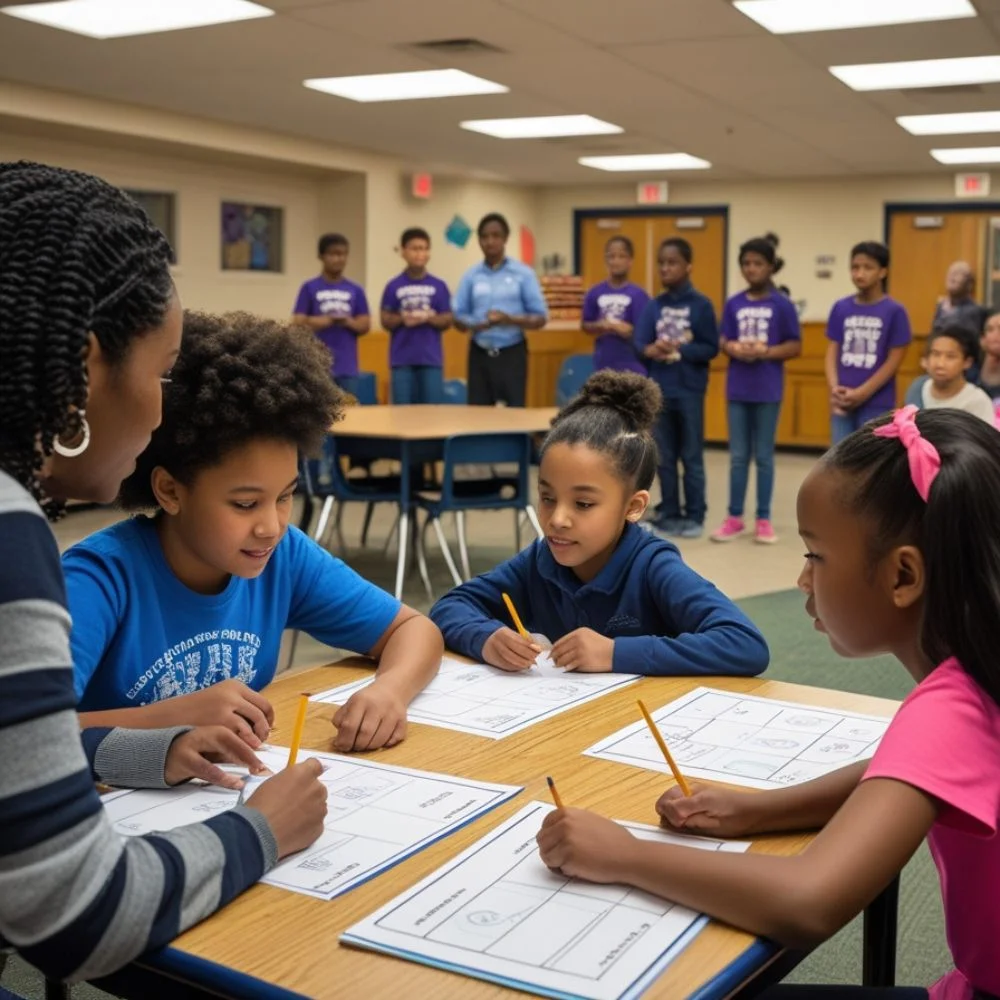
Collaborative education does not only happen in schools. Parents and community leaders also have a role to play.
1. Parents Can Help By:
- Encouraging group homework
- Teaching respect for all voices
- Promoting reading and group discussions at home
2. Community Involvement
- Libraries can host group learning sessions
- Local businesses can sponsor team projects
- Guest speakers can share real-world teamwork stories
Comparing Collaborative Learning With Traditional Learning
It’s important to see the clear difference between collaborative learning and traditional learning methods.
- Feature Traditional Learning Collaborative Learning
- Student Role: Passive listener, Active participant
- Teacher Role: Main speaker, Guide or mentor
- Focus on Individual learning, Group knowledge sharing
- Outcome Grades only Skills + grades + teamwork
- Skill Building Memory, discipline, Problem-solving, leadership
Practical Strategies to Apply Collaborative Education
To bring collaborative education into classrooms, educators can follow practical and easy-to-apply strategies. These ideas work well across different age groups and subjects.
1. Use Think-Pair-Share Activities:
One simple method is “Think-Pair-Share.” Here’s how it works:
- First, the teacher asks a question.
- Students think about their answers silently.
- Then they pair up and share thoughts.
- After that, they share ideas with the whole class.
This method encourages every student to take part, even the quiet ones.
2. Build Long-Term Group Projects:
Instead of only short tasks, teachers can create longer projects where students work in teams for weeks. These may include:
- Making a short film
- Writing a class newspaper
- Planning a school event
Long-term work teaches patience, planning, and cooperation. It also mirrors real-life tasks in offices and organizations.
3. Use Reflection Journals:
After each group activity, students can write a short reflection. They can answer questions like:
- What did I do well in the team?
- How could I have helped more?
- What did I learn from my group?
Global Impact of Collaborative Education
Collaborative education is not just helping students in one region it’s improving learning across the globe. Countries with limited access to traditional schools are using group learning to build stronger learning communities. In places like rural Africa and South Asia, shared learning circles help children support each other. In Europe and North America, collaborative classrooms promote equality and active thinking.
International organizations now include collaboration as a core skill in education standards. The UNESCO Education 2030 Agenda highlights teamwork, communication, and global citizenship, all skills promoted through collaborative learning.
Conclusion
Collaborative education is not just a new trend: it is a better way to learn. It gives students the tools they need to succeed in life and work. It helps them build knowledge by sharing, questioning, and working together. In a world that values creativity and connection, collaborative learning is the smart path forward. To make this shift, schools, teachers, parents, and communities must work as a team. When everyone supports group learning, students grow faster, think bigger, and become stronger together.
